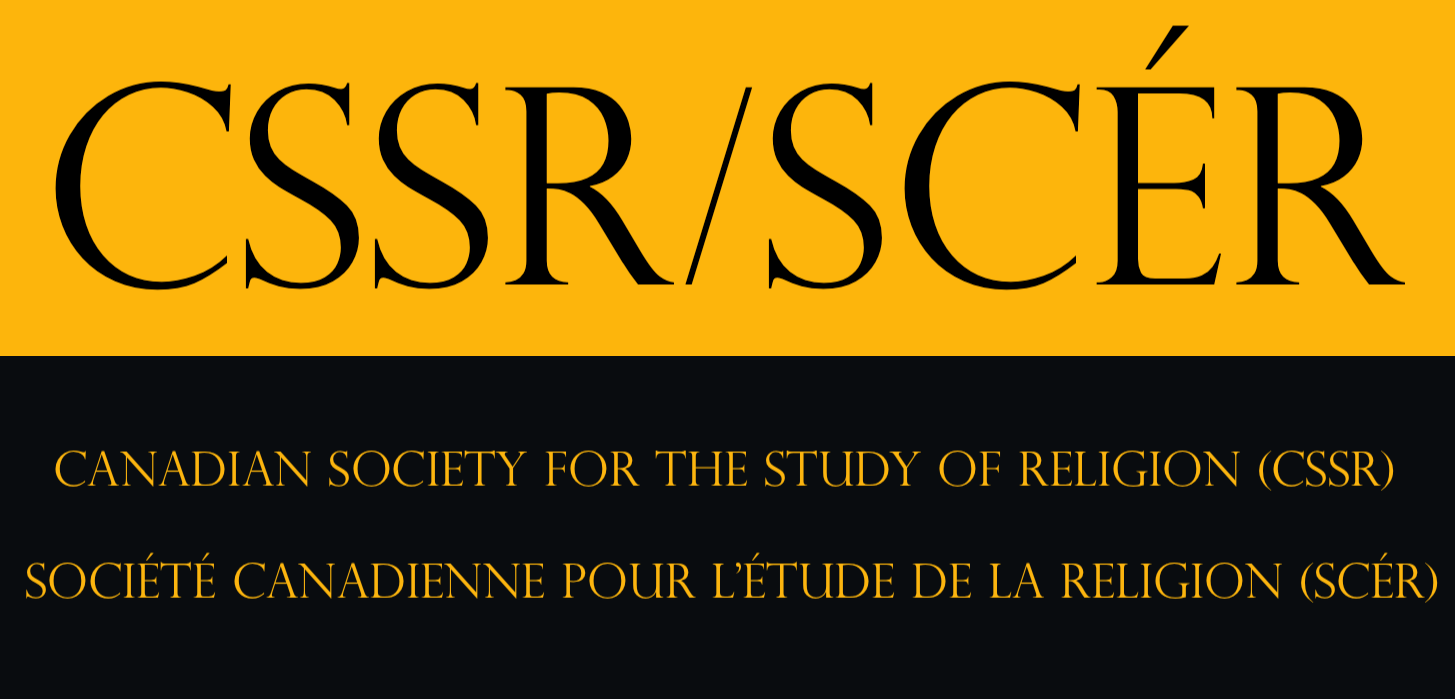Call for Papers mid-term Conference “Dynamics of Religion in Southeast Asia”
Call for Papers mid-term Conference “Dynamics of Religion in
Southeast Asia”
Date: June 26 to 29, 2013
Place: University of Goettingen, Germany Organized by: Competence
network “Dynamics of Religion in Southeast Asia” (DORISEA), funded by
the German Federal Ministry of Education and Research. See
http://www.dorisea.de/en.
Keynote Speaker: Robert Hefner, Boston University.
Deadline for the submission of abstracts: November 30th, 2012.Please
send your abstracts to dorisea@uni-goettingen.de and indicate in which
panel you would like to participate.
Conference topic
In global comparison, Southeast Asia stands out as a region marked by a
particularly diverse religious landscape. Various “ethnic religions”
interact with so-called “world religions”, all of the latter – with the
exception of Judaism – being represented in the region. While religion
has oftentimes been viewed as an antithesis to modernity, scholarship
has shown that religion shapes (or: is intertwined with?) modernization
processes in crucial ways and that its role in contemporary Southeast
Asian societies is intensifying. The mid-term conference “Dynamics of
Religion in Southeast Asia” will explore this link between “religion”
and “modernity” by focusing on three dimensions of religious dynamics,
namely mediality, politics and mobility. In the spirit of Southeast
Asian studies as a holistic, i.e. trans-disciplinary approach, we invite
papers from fields as diverse as history, anthropology, sociology,
political science, media studies, geography or linguistic studies that
investigate the peculiar dynamics of religion in times of globalization,
and the ways in which these dynamics mediate change and continuity in
Southeast Asia.
Panel 1: materializing Religion: on Media, Mediation, Immediacy
Given that religion “is the practice of making the invisible visible, of
concretizing the order of the universe, the nature of human life and its
destiny, and the various dimensions and possibilities of human
interiority itself” (Robert Orsi 2005: 74), the study of religion
necessarily has to scrutinize correlating processes and resources of its
materialization. Accordingly, we have to acknowledge that the worlds of
religions and the media are not separate or competing spheres of
influence, but converge. The study of religion, then, is interrelated
with the study of media, mediation and audience perception, of sacred
books and images, material objects and the human senses, of religious
practices in a public sphere, which is extensively permeated by modern
communication technologies. Research on the dynamics of religion in
modern Southeast Asia will profit from such a perspective.
Invited are papers on the interface of media and religions in Southeast
Asia. Hereby, priority is given to four dimensions of the media and
mediation of religions.
* Concept of “medium” beyond mass media. This involves discussing the
medium not only as a means of communication between humans but also
between humans and spiritual powers (ritual activities and visual
representations through the medium photography; performing arts; ghost
pictures and films). In its modern genealogy, the term “medium” always
carries a double meaning. Therefore, we include and discuss spirit
possession and mediumship as distinct forms of materialization –
creating immediacy through embodiment Particular attention will be paid
to the modalities of processes of mediation.
* Constitution and circulation of codes of representation: norms and
deviation. The communication of “religious” contents via media is
subject to regulation, from legal restrictions and censorship to
historically and culturally constituted codes of representation
(including aesthetic ones). In this context, the question may arise as
to what medium / media are considered “apt” to communicate religious
contents. Hereby, the authoritative role of the medium “tex* Medium, loss and preservation. Media (be it textual, pictorial or
material) are used in an effort to document and to preserve, or to
remind: this relates to loss, to death (portraits) and cultures of
remembrance. Questions surrounding individuality / collectivity emerge
here as well as questions of temporal mediation and transmission (the
medium as transcending time).
* Relation between religious authority and medium / media. New media
such as radio or the Internet allow persons without formal religious
training to get to a position of religious authority. The effects can be
considered as dissolving religious authority and/or as fundamentally
democratising. On the other hand, the spread of religious teachings
increases through the use of such media, and they are, of course, used
intensely by religious authorities.
Papers should address at least one of the above-mentioned dimensions, be
empirically grounded and theoretically informed.
Panel 2: Secularization of Religion, Sacralization of Politics? The
State of Religion in Southeast Asia
Scholars of Southeast Asia have tirelessly emphasized the tight
interplay between politics and religion in the region and questioned the
very salience of “religion” and “politics” as separate spheres. From the
veneration of national heroes in Vietnamese temples to the declaration
by former Prime Minister Mahathir that Malaysia was an Islamic state, a
neat distinction between the “religious” and the “political” seems hard
to sustain. In terms of theory, this observation has generally led to a
refutation of the cornerstone of modernization theory, namely
secularism, as a Eurocentric line of thought. This panel seeks to go
beyond the simple refutation of the secularization thesis and welcomes
contributions that are both theoretically informed and empirically
grounded in their investigation of the manifold relations between
“religion” and “politics” in Southeast Asia – from the much noted
politicisation of religion, to the ritual and performative dimensions of
the political.
Historical accounts have long emphasized the mutually constitutive ties
of religion and politics in the region. Religion in Southeast Asia has
indeed never been solely a tradition, a belief system, the combination
of belief and ritual or an instrument to explain the world. Since the
introduction of the world religions Hinduism, Buddhism (both vehicles),
later Islam and Christianity from the neighboring regions, these world
religions have been, like their tribal beliefs systems, which existed
before and together with them, instruments to create and to legitimize
rules and rulers and to organize societies. This is a general feature
since the times when the earliest kingdoms and empires were founded
along the trade routes between India and China in the first centuries
AD.
Postcolonial nation-states have intervened directly in the definition of
what “religion” entails, from designating a particular religion as
“state religion”, incorporating certain religious idioms into national
ideology, to legally regulating the religious sphere. Indonesia’s
Pancasila ideology that incorporated various “world religions” under a
Judeo-Christian-Muslim notion of “religion” (Ramstedt 2004), the
parallel processes of representational re-vitalization and institutional
weakening of Buddhism in Laos (Morev 2002), or, more recently, the
“nationalisation of Islam” in the context of globalization and
neoliberal capitalism in Malaysia (Fischer 2008) are all examples of
possible articulations of the national and the religious in contemporary
Southeast Asia. While processes of globalization, migration, economic,
ecological or demographic changes are reaching today the “last
frontiers” of Southeast Asia’s rural, jungle and highland areas, so does
the reach of the modern state: intensifying globalization has not
brought about the demise of the nation-state. Yet, transnational
religious networks – such as the Pentecostal Church – do contest the
monopoly of the state over certain arthe national as the main frame of reference and identity marker by
referring to a land “in which God, not the (…) state, has dominion”
(Glick Schiller & Karagiannis 2006:160).
Rather than to equate “politics” with “the state”, in this panel, we
seek to explore the manifold linkages between the “religious” and the
“political” in globalized Southeast Asia, from the formal institutions
and regulatory mechanisms policing the religious sphere to the political
claims of religious networks. Importantly, we are not only interested in
the ways in which the secular and the religious are respectively defined
in local, national and global contexts, but also how religious and state
officials draw the internal boundaries of what “religion” entails,
marginalizing, for instance, “(its) less objectified and less
rationalized manifestations” labeled as “animism” (Lambek 2012).
Papers may address – without being limited to – the following set of
questions:
Which political strategies do social actors deploy in the struggle for
political, or, respectively, religious authority and to which ends? How
are such attempts subverted, instrumentalized or resisted? How is
religious authority used to gain political authority and how is the
latter used to ‘authenticate’ (e.g. national, religious) identities and
its ‘others’? How does the regulation of religion by the nation-state –
for instance through law and education – relate to the context of
economic globalization? How are transnational religious influences
‘mediated’ with national religiosities?
Panel 3: Spatial Dynamics of Religion between Modulation and Conversion
The panel aims at exploring the spatial dimension of religious change. A
reflection on religious practices in Southeast Asia, where different
religions share sacred places, multi-religious rituals are common and
religious mobility blurs into other forms of travel, clearly shows that
religious change is always entangled with dynamics of movement and
place-making. But how are these entanglements to be approached
empirically and conceptually? Change can be understood on a conceptual
and experiential continuum between modulation – as a reproduction and
variation within conventional sets of rules, orientations and meanings –
and conversion – as a break with previous social and cosmological
orientations. The spatial can be conceived as being constituted through
the triality of extension, place and movement. Depending on the ways
these formal dimensions of change and space take material shape, the
dynamics of religion are articulated in historically specific ways which
will be the focus of the panel. Papers may address – without being
limited to – the following topics:
The movement between places can be understood as a spatial articulation
of dynamics of religion. Pilgrimage, for example, potentially
facilitates experiences of connectivity, similarity and alterity of
places and religions. How do such experiences of movement and distant
places mediate experiences and conceptualizations of religious change
unfolding between modulation and conversion?
Even without geographic mobility, conversions often imply a spatial
dimension. They may involve a shift of or a reorientation within spatial
orders (e.g., the integration of certain groups in new structures of
religious centers and peripheries). How do such shifts within spatial
orders mediate religious change? How are social, political, economic and
cultural dynamics related to religion through encompassing spatial
orders?
Places are constituted through practices of inclusion and exclusion
which can both accommodate a diversity of religious forms as well as
demonstrate the purity of a single religious form. What are the
different ways of dealing with diversity in religious places? How are
spatial articulations of inclusion and exclusion practically implemented
in processes of place-making and how are they related to experiences of
modulation or conversion?
Religious places are neither self-contained nor mono-functionaanother dimension. They may, for example, simultaneously be sites of
sacred power, national remembrance, tourism and commerce. How are
multiple connectivity and multi-functionality achieved and managed
through spatial practices of movement and place-making (e.g.,
pilgrimage, migration, spatial distribution of objects and activities,
establishing of topographies, etc.) in relation to religious change?

